Abstract
1 Phospholipase A2-crotapotin complex (P-C complex) isolated from the venom of Crotalus durissus terrificus induced an irreversible blockade of neuromuscular transmission when twitch tension was measured in the mouse phrenic nerve-hemidiaphragm preparation in vitro at 37°C.
2 A similar concentration of the phospholipase A2 (10 μg/ml) alone did not affect neuromuscular transmission and no priming action was detected on later addition of crotapotin.
3 The rate of neuromuscular blockade induced by P-C complex (15 μg/ml) was not altered by raising the frequency of nerve stimulation. Lower temperatures markedly increased the time of onset and reduced the rate of blockade (Q10 (27-37°C) of 4.4) whilst replacement of Ca by Sr in the medium prevented this activity. These latter results suggest that enzymatic activity is important in the neurotoxicity of the complex.
4 A myotoxic action was shown by 30 μg/ml P-C complex and 30 μg/ml phospholipase A2.
5 P-C complex (150 μg) was injected into the tail vein of mice and the intoxicated hemidiaphragm preparation removed for intracellular recording at 25°C.
6 In fully intoxicated hemidiaphragms, resting membrane potentials were unaltered and endplate potentials (e.p.ps) varied in average amplitude from zero to less than 3 mV.
7 Miniature endplate potential (m.e.p.p.) frequency was lower at fully poisoned endplates than at controls; the frequency rose during a 50 Hz tetanus but was unaffected by either raising external K or the application of the Ca-ionophore A23187.
8 E.p.ps were recorded in partially intoxicated hemidiaphragms with (+)-tubocurarine (0.5-1.0 μg/ml) added to prevent contraction. Evoked release was abnormal as 50 Hz tetanus elicited e.p.ps of very variable amplitude, no facilitation of response was shown to paired stimuli, and tetraethylammonium (0.5 mM) failed to increase e.p.p. amplitudes.
9 M.e.p.ps and e.p.ps were recorded at partially poisoned endplates in low Ca-high Mg solution. A reduction in the quantal content of evoked transmitter release was observed in comparison with controls.
10 M.e.p.ps recorded at partially and at fully intoxicated endplates showed an altered amplitude distribution with a higher proportion of large potentials.
11 It is concluded that P-C complex has a presynaptic site of action and may interfere with depolarization-secretion coupling at the motor nerve terminals.
Full text
PDF
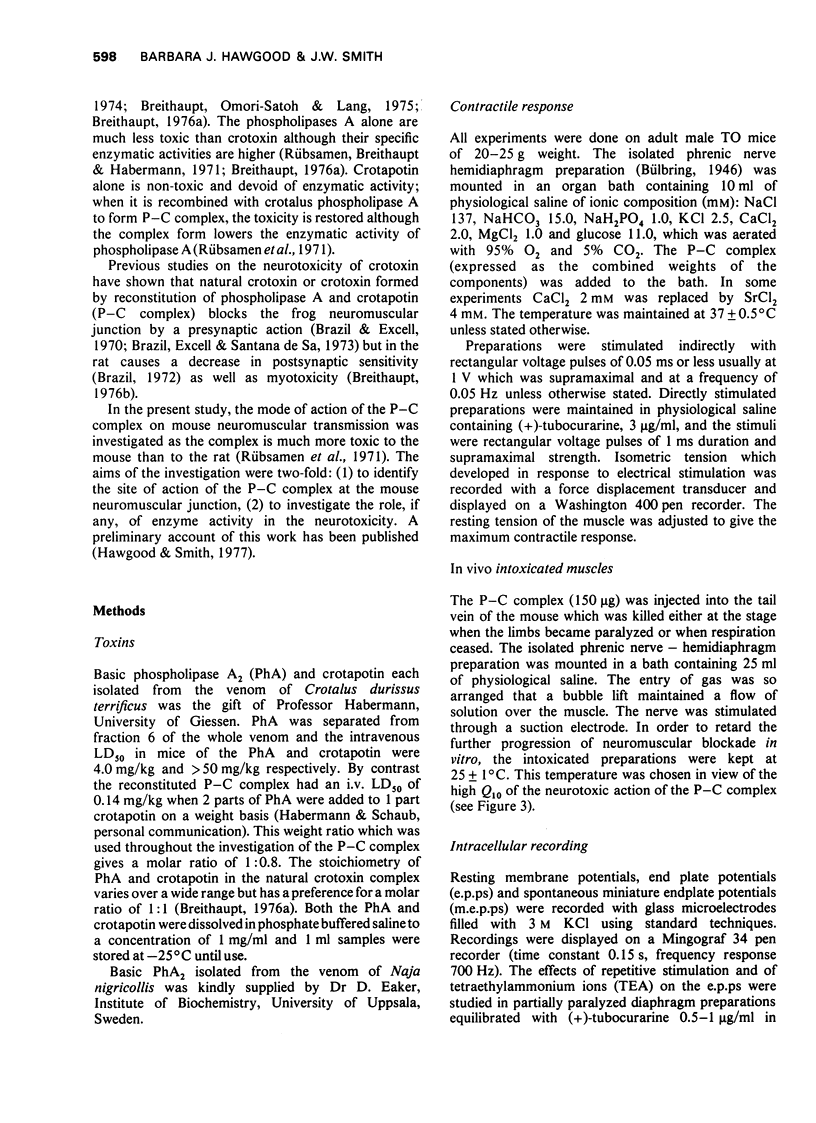
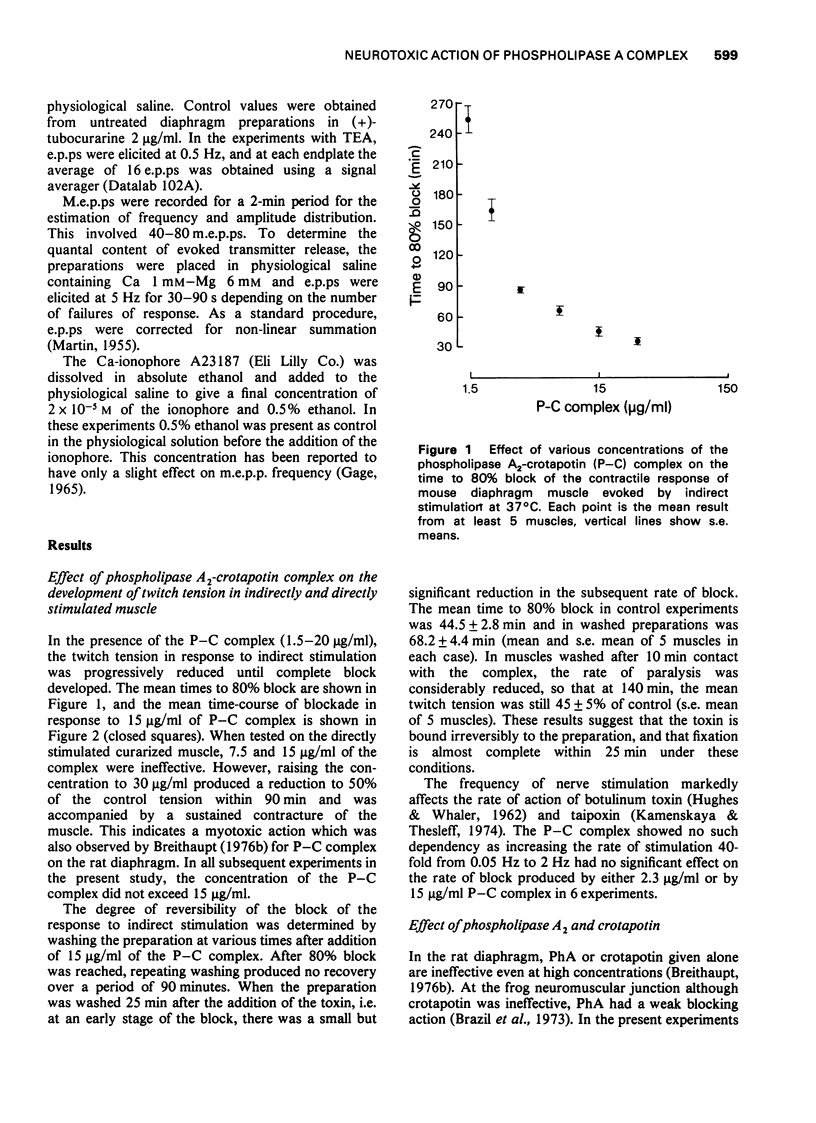
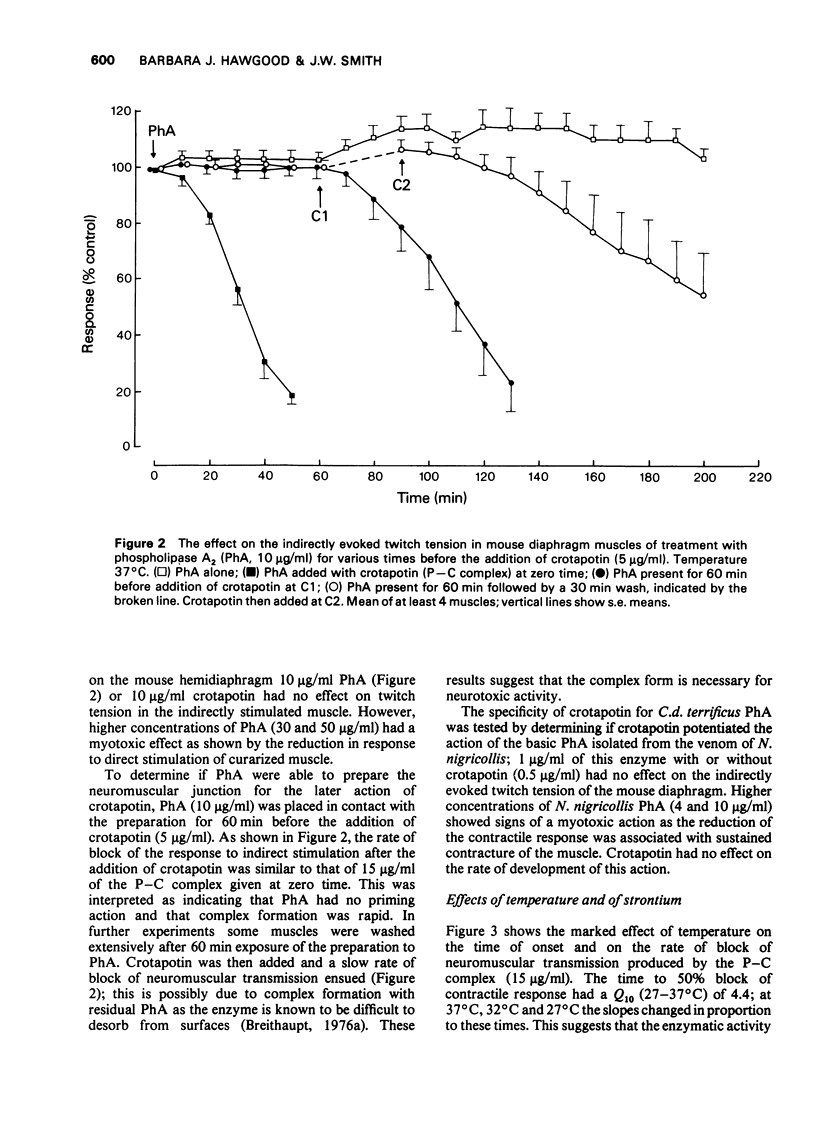
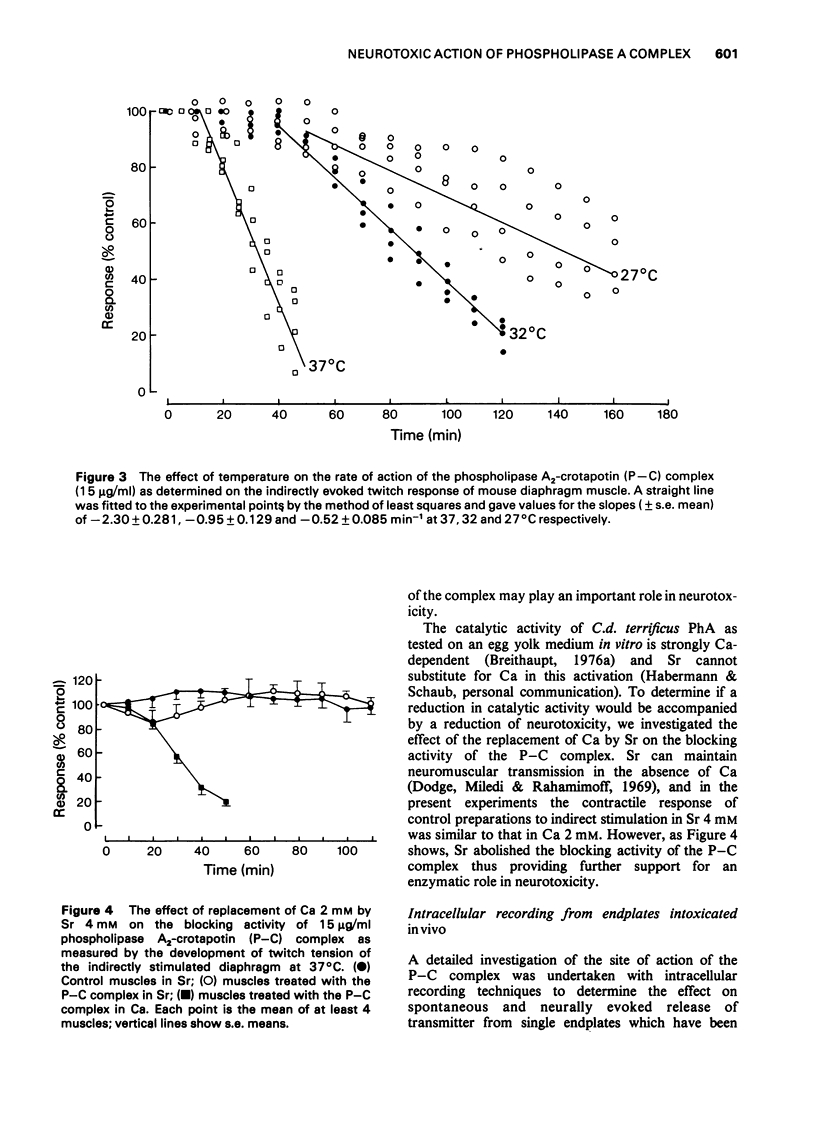
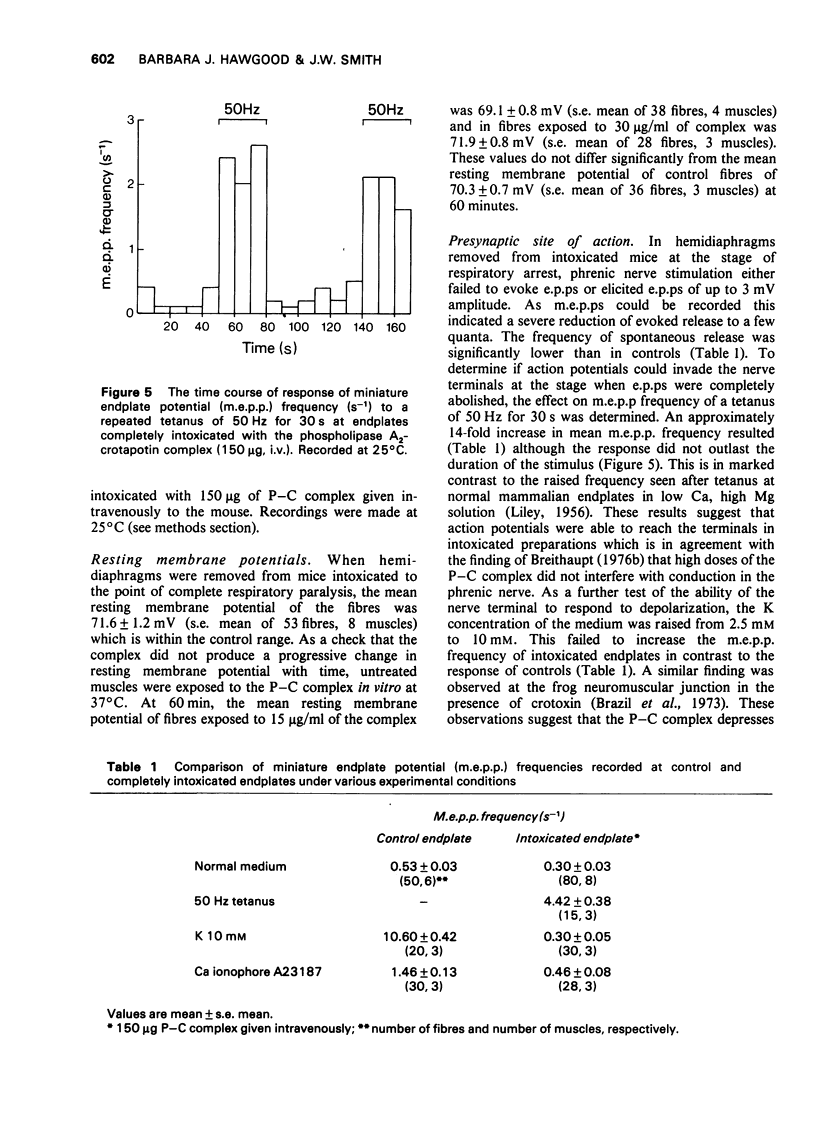

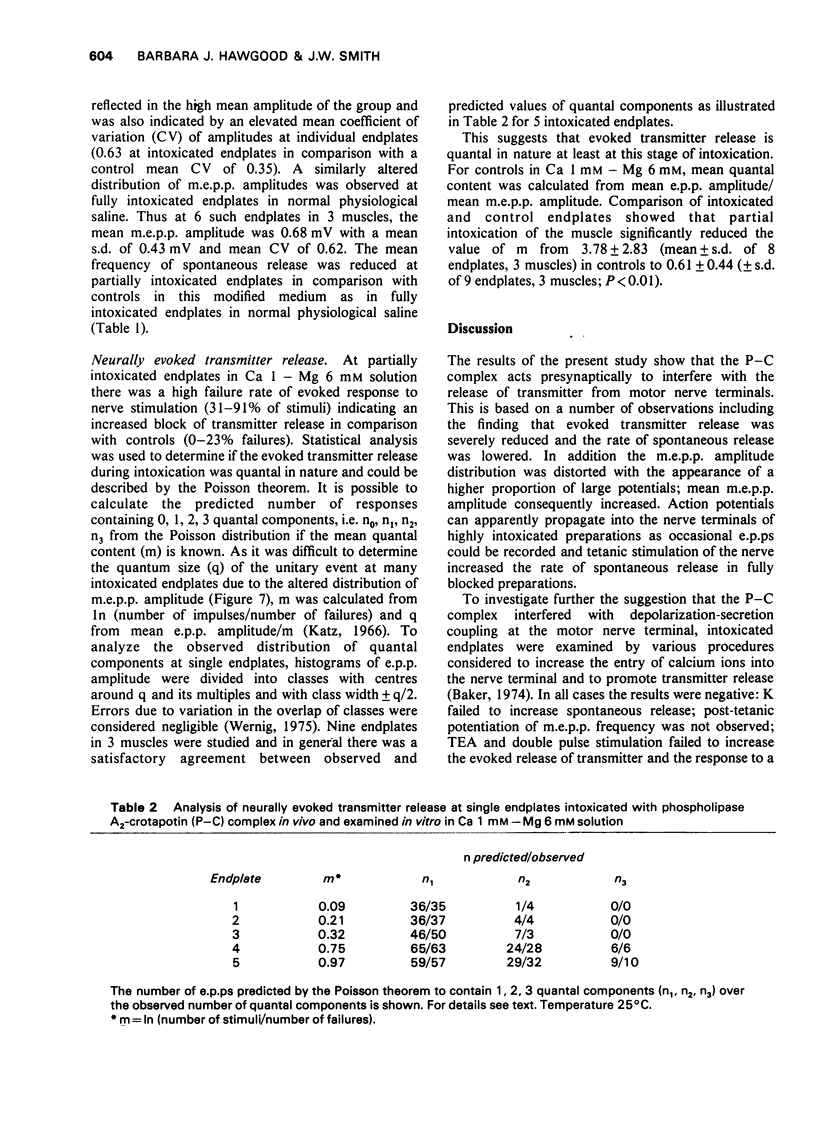
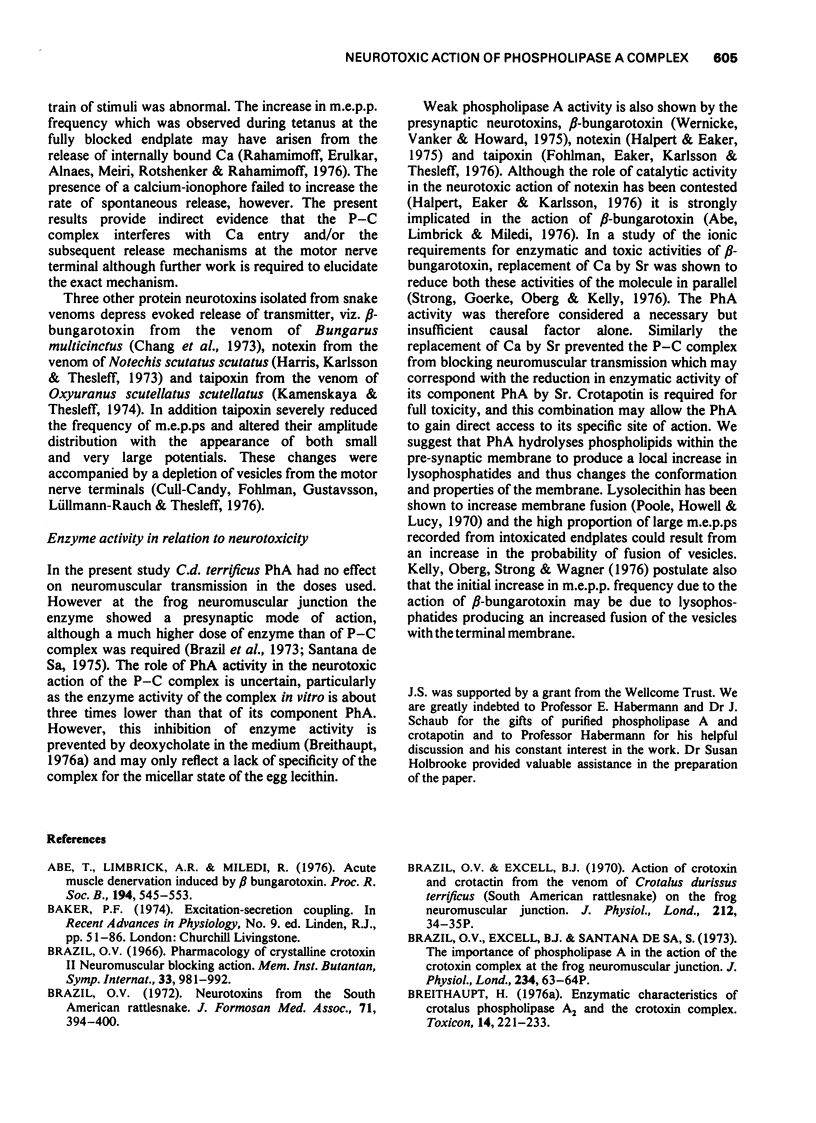
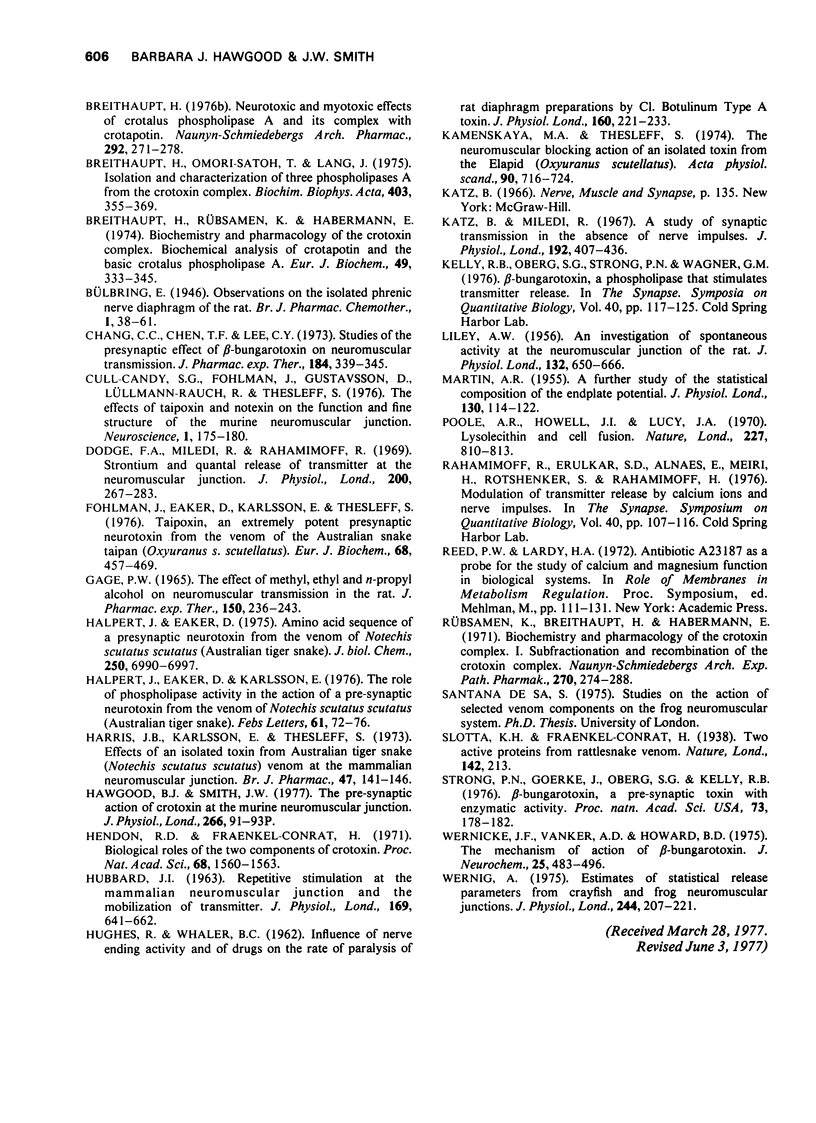
Images in this article
Selected References
These references are in PubMed. This may not be the complete list of references from this article.
- Abe T., Limbrick A. R., Miledi R. Acute muscle denervation induced by beta-bungarotoxin. Proc R Soc Lond B Biol Sci. 1976 Nov 12;194(1117):545–553. doi: 10.1098/rspb.1976.0093. [DOI] [PubMed] [Google Scholar]
- Brazil O. V. Neurotoxins from the South American rattle snake venom. Taiwan Yi Xue Hui Za Zhi. 1972 Jul 28;71(6):394–400. [PubMed] [Google Scholar]
- Brazil O. V. Pharmacology of crystalline crotoxin. II. Neuromuscular blocking action. Mem Inst Butantan. 1966;33(3):981–992. [PubMed] [Google Scholar]
- Breithaupt H. Enzymatic characteristics of crotalus phospholipase A2 and the crotoxin complex. Toxicon. 1976;14(3):221–233. doi: 10.1016/0041-0101(76)90010-6. [DOI] [PubMed] [Google Scholar]
- Breithaupt H. Neurotoxic and myotoxic effects of crotalus phospholipase A and its complex with crotapotin. Naunyn Schmiedebergs Arch Pharmacol. 1976;292(3):271–278. doi: 10.1007/BF00517389. [DOI] [PubMed] [Google Scholar]
- Breithaupt H., Omori-Sato T., Lang J. Isolation and characterization of three phospholipases A from the crotoxin complex. Biochim Biophys Acta. 1975 Oct 22;403(2):355–369. doi: 10.1016/0005-2744(75)90065-0. [DOI] [PubMed] [Google Scholar]
- Breithaupt H., Rübsamen K., Habermann E. Biochemistry and pharmacology of the crotoxin complex. Biochemical analysis of crotapotin and the basic Crotalus phospholipase A. Eur J Biochem. 1974 Nov 15;49(2):333–345. doi: 10.1111/j.1432-1033.1974.tb03838.x. [DOI] [PubMed] [Google Scholar]
- Chang C. C., Chen T. F., Lee C. Y. Studies of the presynaptic effect of -bungarotoxin on neuromuscular transmission. J Pharmacol Exp Ther. 1973 Feb;184(2):339–345. [PubMed] [Google Scholar]
- Cull-Candy S. G., Fohlman J., Gustavsson D., Lüllmann-Rauch R., Thesleff S. The effects of taipoxin and notexin on the function and fine structure of the murine neuromuscular junction. Neuroscience. 1976 Jun;1(3):175–180. doi: 10.1016/0306-4522(76)90074-9. [DOI] [PubMed] [Google Scholar]
- Dodge F. A., Jr, Miledi R., Rahamimoff R. Strontium and quantal release of transmitter at the neuromuscular junction. J Physiol. 1969 Jan;200(1):267–283. doi: 10.1113/jphysiol.1969.sp008692. [DOI] [PMC free article] [PubMed] [Google Scholar]
- Fohlman J., Eaker D., Karlsoon E., Thesleff S. Taipoxin, an extremely potent presynaptic neurotoxin from the venom of the australian snake taipan (Oxyuranus s. scutellatus). Isolation, characterization, quaternary structure and pharmacological properties. Eur J Biochem. 1976 Sep 15;68(2):457–469. doi: 10.1111/j.1432-1033.1976.tb10833.x. [DOI] [PubMed] [Google Scholar]
- Gage P. W. The effect of methyl, ethyl and n-propyl alcohol on neuromuscular transmission in the rat. J Pharmacol Exp Ther. 1965 Nov;150(2):236–243. [PubMed] [Google Scholar]
- HUBBARD J. I. REPETITIVE STIMULATION AT THE MAMMALIAN NEUROMUSCULAR JUNCTION, AND THE MOBILIZATION OF TRANSMITTER. J Physiol. 1963 Dec;169:641–662. doi: 10.1113/jphysiol.1963.sp007286. [DOI] [PMC free article] [PubMed] [Google Scholar]
- HUGHES R., WHALER B. C. Influence of nerve-ending activity and of drugs on the rate of paralysis of rat diaphragm preparations by Cl. botulinum type A toxin. J Physiol. 1962 Feb;160:221–233. doi: 10.1113/jphysiol.1962.sp006843. [DOI] [PMC free article] [PubMed] [Google Scholar]
- Halpert J., Eaker D. Amino acid sequence of a presynaptic neurotoxin from the venom of Notechis scutatus scutatus (Australian tiger snake). J Biol Chem. 1975 Sep 10;250(17):6990–6997. [PubMed] [Google Scholar]
- Halpert J., Eaker D., Karlsson E. The role of phospholipase activity in the action of a presynaptic neurotoxin from the venom of Notechis scutatus scutatus (Australian tiger snake). FEBS Lett. 1976 Jan 1;61(1):72–76. doi: 10.1016/0014-5793(76)80174-3. [DOI] [PubMed] [Google Scholar]
- Harris J. B., Karlsson E., Thesleff S. Effects of an isolated toxin from Australian tiger snake (Notechis scutatus scutatus) venom at the mammalian neuromuscular junction. Br J Pharmacol. 1973 Jan;47(1):141–146. doi: 10.1111/j.1476-5381.1973.tb08168.x. [DOI] [PMC free article] [PubMed] [Google Scholar]
- Hendon R. A., Fraenkel-Conrat H. Biological roles of the two components of crotoxin. Proc Natl Acad Sci U S A. 1971 Jul;68(7):1560–1563. doi: 10.1073/pnas.68.7.1560. [DOI] [PMC free article] [PubMed] [Google Scholar]
- Kamenskaya M. A., Thesleff S. The neuromuscular blocking action of an isolated toxin from the elapid (Oxyuranus scutellactus). Acta Physiol Scand. 1974 Apr;90(4):716–724. doi: 10.1111/j.1748-1716.1974.tb05639.x. [DOI] [PubMed] [Google Scholar]
- Katz B., Miledi R. A study of synaptic transmission in the absence of nerve impulses. J Physiol. 1967 Sep;192(2):407–436. doi: 10.1113/jphysiol.1967.sp008307. [DOI] [PMC free article] [PubMed] [Google Scholar]
- Kelly R. B., Oberg S. G., Strong P. N., Wagner G. M. beta-Bungarotoxin, a phospholipase that stimulates transmitter release. Cold Spring Harb Symp Quant Biol. 1976;40:117–125. doi: 10.1101/sqb.1976.040.01.013. [DOI] [PubMed] [Google Scholar]
- LILEY A. W. An investigation of spontaneous activity at the neuromuscular junction of the rat. J Physiol. 1956 Jun 28;132(3):650–666. doi: 10.1113/jphysiol.1956.sp005555. [DOI] [PMC free article] [PubMed] [Google Scholar]
- MARTIN A. R. A further study of the statistical composition on the end-plate potential. J Physiol. 1955 Oct 28;130(1):114–122. doi: 10.1113/jphysiol.1955.sp005397. [DOI] [PMC free article] [PubMed] [Google Scholar]
- Poole A. R., Howell J. I., Lucy J. A. Lysolecithin and cell fusion. Nature. 1970 Aug 22;227(5260):810–814. doi: 10.1038/227810a0. [DOI] [PubMed] [Google Scholar]
- Rahamimoff R., Erulkar S. D., Alnaes E., Meiri H., Rotshenker S., Rahamimoff H. Modulation of transmitter release by calcium ions and nerve impulses. Cold Spring Harb Symp Quant Biol. 1976;40:107–116. doi: 10.1101/sqb.1976.040.01.012. [DOI] [PubMed] [Google Scholar]
- Rübsamen K., Breithaupt H., Habermann E. Biochemistry and pharmacology of the crotoxin complex. I. Subfractionation and recombination of the crotoxin complex. Naunyn Schmiedebergs Arch Pharmakol. 1971;270(3):274–288. doi: 10.1007/BF00997027. [DOI] [PubMed] [Google Scholar]
- Strong P. N., Goerke J., Oberg S. G., Kelly R. B. beta-Bungarotoxin, a pre-synaptic toxin with enzymatic activity. Proc Natl Acad Sci U S A. 1976 Jan;73(1):178–182. doi: 10.1073/pnas.73.1.178. [DOI] [PMC free article] [PubMed] [Google Scholar]
- Wernicke J. F., Vanker A. D., Howard B. D. The mechanism of action of beta-bungarotoxin. J Neurochem. 1975 Oct;25(4):483–496. doi: 10.1111/j.1471-4159.1975.tb04354.x. [DOI] [PubMed] [Google Scholar]
- Wernig A. Estimates of statistical release parameters from crayfish and frog neuromuscular junctions. J Physiol. 1975 Jan;244(1):207–221. doi: 10.1113/jphysiol.1975.sp010792. [DOI] [PMC free article] [PubMed] [Google Scholar]



